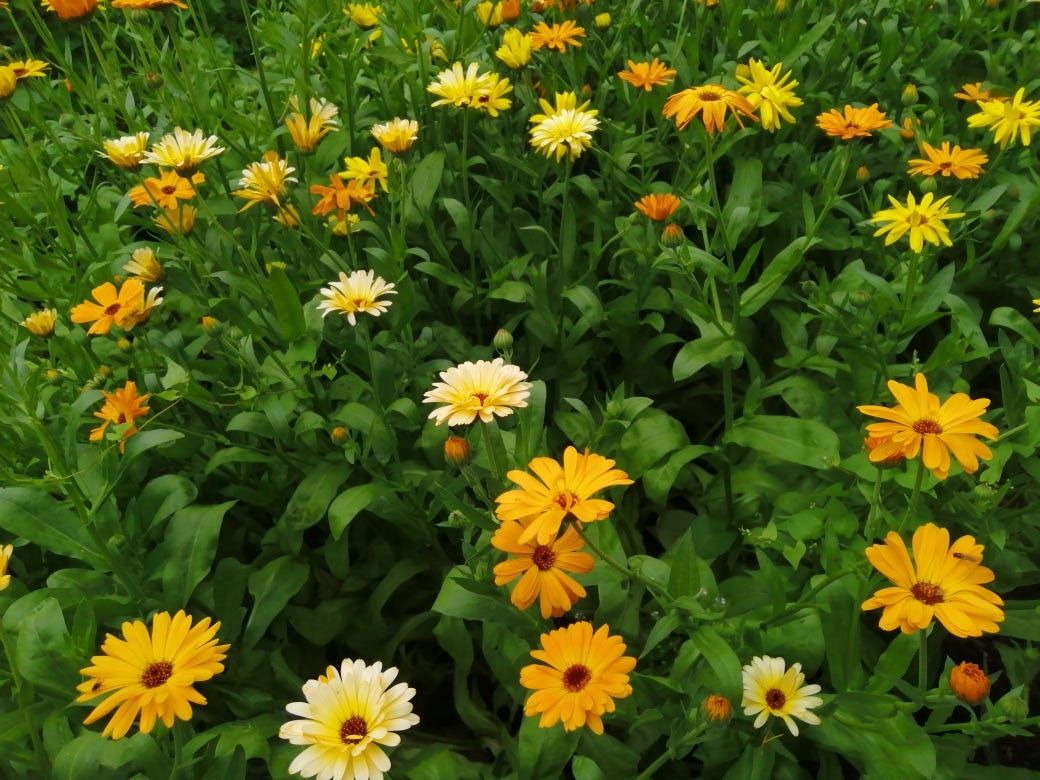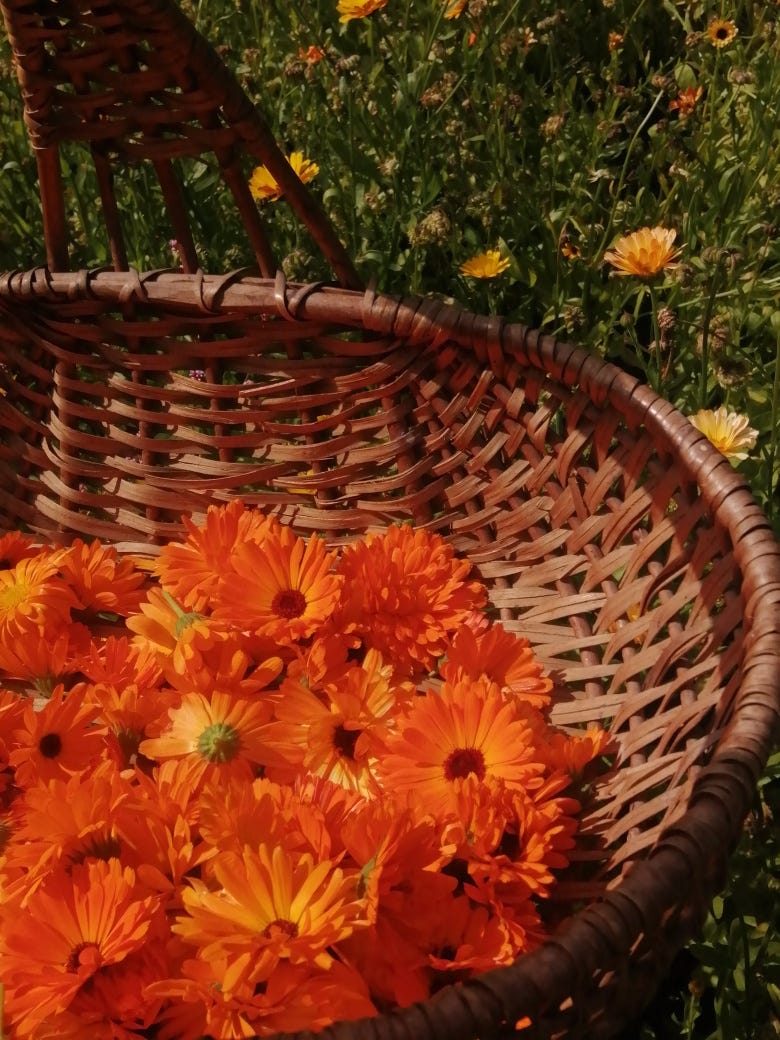October days and the darker nights ✨
Calendula – a beautiful reminder of brighter days to come. It’s interesting that moving into the darker days I’m being drawn to working with Calendula, a herb of long, sunny summer days. I’m busy making balms in my dispensary and remembering warmer months growing this precious medicine.
Calendula is such a beautiful herbal medicine and so easy to grow. I harvest the flowers and carefully dry them to retain their vibrancy to make tinctures and infused oils for herbal medicine.
Calendula is also known as Pot Marigold, (not to be confused with French Marigolds - a totally different plant and not to be consumed) and there are a variety of colours from a pale lemony yellow to deep orange. Historically calendula flowers were used to tell the time as the flowers would open about 9am and then close shut again at around 3pm which was the end of the day of work.
The flower was prized by the Romans, Egyptians and Ancient Greeks not only for the healing qualities but also for colouring food and as a dye.
Calendula has anti-inflammatory actions and can soothe angry skin. It’s a herb I always think of for inflamed skin conditions, eczema, insect bites, rashes and much more.
Gertrude Jekyll was a British horticulturalist who grew Calendula during WWI which were sent to France. The anti-inflammatory, wound healing and anti fungal qualities were much needed in the field hospitals and closer to home Dr Dorothy Shepherd also used Calendula during the London Blitz. However Calendula has far more qualities and properties than ‘just’ a wound healing herb.
When tinctured, Calendula can have different actions depending on the strength of alcohol used. I also work with Calendula in infused oil for skin preparations. I’ve seen a lot of patients this year struggling with stress and skin conditions and it’s been an important part of their herbal prescription.
I love making herbal balms with just Calendula. The beautiful oil is packed with skin soothing properties and it’s so satisfying knowing that I’ve grown this medicine from seed.
When I’m harvesting Calendula I pick the whole head of the flower, including the green calyx just under the flower petals as that’s where the medicinal bitter compounds and resins are found. I always leave harvesting flowers until I know I’ll be able to process them straight after so no harvesting and then two hours of weeding as the plant starts to degrade as soon as it’s picked (same with any herbs being used for medicine).
Calendula contains bitter principles, sterols, saponins and has cleansing and detoxifying actions, as well as being anti-microbial, antiseptic and anti-inflammatory, astringent, vulnerary and can relieve muscle spasms. Calendula is also mildly oestrogenic so it’s a herb I wouldn’t dispense in tincture or tea form during pregnancy.
Calendula petals are also edible - just make sure it’s Calendula officinalis and not the French Marigolds (Tagetes) which are not to be consumed. The petals can be scattered into salads to bring some colour to your bowl, adding some sunshine!
This sunny healing herb brings life to a sluggish lymphatic system, there’s a saying of Calendula bringing life ‘to where the sun doesn’t shine’ and it’s a herb I always think of a congested lymphatic system which can present with cold hands/feet or cysts in the armpits or groin.
Calendula has a special affinity to the female reproductive system, it’s a herb I think of for healing post partum, for regulating periods and as a blood cleanser it’s a herb I keep in mind for during perimenopause when the liver can need some extra support.
Last year the Calendula were still showing their sunny faces in the garden in November. The name Calendula comes from the Roman word ‘kalends’ - as they could bloom every month of the year! I’ve been carefully storing Calendula seeds from this summer for planting next year as I have big plans to grow a lot more in 2025. That was the plan this year but the intense rain impacted the growing season.
Energetically Calendula is hot and dry and is ruled by the Sun, even now I’m adding Calendula petals into my food to keep the sunshine on the plate.
I hope you’ve enjoyed learning a bit more about Calendula. There’s so much more I could add but this hopefully inspires you to get to know this wonderful plant a bit more.
Cath







